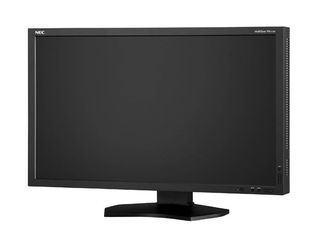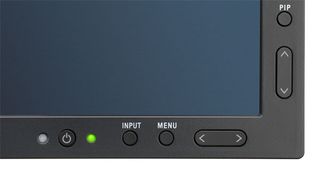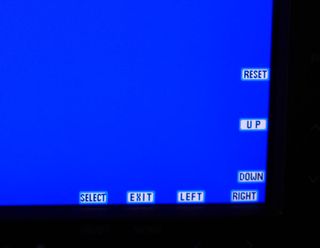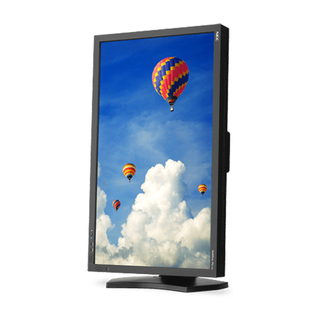NEC PA272W 27-Inch Monitor Review: Accuracy And Flexibility
We’ve reviewed a lot of professional-class monitors, NEC's PA272W may be the most accurate and capable one ever to hit the Tom's Hardware lab. At almost $1300, it’s expensive for a 27-inch QHD screen. But there are features here you won’t find elsewhere.
Packaging, Physical Layout, And Accessories
Our press sample PA272W arrived in a stout double-corrugated box that seemed virtually impregnable. It’s very thick, and the monitor is almost completely enclosed by Styrofoam. The base and upright are already attached, so all you have to do is pull the display up and out for setup.
Four different power cords are included, covering the U.S. and three other regions. You also get dual-link DVI, mini-to-standard DisplayPort, and USB A-to-B cables. There are a few printed materials too, though there’s no English manual except for a small quick-start guide. You don't get a CD-ROM either, so you’ll have to download documentation and supporting software from NEC’s website.
Product 360

The PA272W follows NEC’s usual design style of minimalist-industrial. Function is definitely more important than form. The monitor doesn’t call attention to itself other than the fact that it’s a little bulkier and thicker than most LCD panels. The bezel is 20 millimeters wide all around, so it’s a good candidate for multi-screen setups.
The anti-glare layer is one of the least aggressive we’ve encountered. It rejects mild reflections, but harsh focused light sources in your workspace should be avoided. The design intent is to maximize clarity and color intensity. You get an extremely high-quality image, even though this display's contrast ratio is not significantly higher than other similarly-priced monitors.

OSD controls are all mechanical; there are no touch keys. They consist of buttons for power, input, menu, and PIP; followed by up/down and left/right rocker switches to navigate the menus. All of the keys have a high-end feel, and a solid click lets you know when you’ve sent a command. The power LED glows blue by default. But you can change the color to green and tone down its intensity if you want. Left of the power button is an ambient light sensor. It can be used to automatically dim or brighten the image, and it can be factored into the calibration.

When you press any key, small icons appear telling you the function of each. This makes it very easy to operate in a dark workspace. Additionally, the rockers can access quick functions like brightness or picture mode without forcing you to navigate the OSD.

You get a full set of ergonomic adjustments, including the pictured portrait mode. The height range adjustment is almost six inches and moves with a reasonable effort. Tilt is around 30 degrees and swivel is over 45 degrees in both directions. Rotating the panel automatically flips the image when you have a compatible video card.
Stay on the Cutting Edge
Join the experts who read Tom's Hardware for the inside track on enthusiast PC tech news — and have for over 25 years. We'll send breaking news and in-depth reviews of CPUs, GPUs, AI, maker hardware and more straight to your inbox.

You can see from the top view that this is a very substantial panel. At 3.3 inches thick, it’s the heftiest LCD monitor we’ve tested in a while. And given the PA272W’s weight of over 28 pounds, it looks like no internal space goes unused. All of the electronics are heavily shielded and there is more than ample cooling provided by full perimeter ventilation.
If you want to use your own mounting solution, the upright comes off without tools. One-hundred- and 100x200-millimeter VESA fittings are provided.

The input panel is digital-only. You get two DisplayPort 1.2 connectors, one mini and one standard. HDMI and DVI are provided also. USB 2.0 comes in the form of two upstream and three downstream ports, one of which is on the panel’s side. In the OSD you can assign the two upstream ports to different video inputs. This way, two computers can share one PA272W with a single keyboard/mouse combo.
Current page: Packaging, Physical Layout, And Accessories
Prev Page NEC PA272W 27” QHD Professional Monitor Review Next Page OSD Setup And Calibration Of The NEC PA272W
Christian Eberle is a Contributing Editor for Tom's Hardware US. He's a veteran reviewer of A/V equipment, specializing in monitors. Christian began his obsession with tech when he built his first PC in 1991, a 286 running DOS 3.0 at a blazing 12MHz. In 2006, he undertook training from the Imaging Science Foundation in video calibration and testing and thus started a passion for precise imaging that persists to this day. He is also a professional musician with a degree from the New England Conservatory as a classical bassoonist which he used to good effect as a performer with the West Point Army Band from 1987 to 2013. He enjoys watching movies and listening to high-end audio in his custom-built home theater and can be seen riding trails near his home on a race-ready ICE VTX recumbent trike. Christian enjoys the endless summer in Florida where he lives with his wife and Chihuahua and plays with orchestras around the state.
-
SuckRaven Every time Tom's Hardware reviews monitors, I keep posting in the comments that they should review NEC and EIZO for accuracy in comparison to the usual suspects. Finally my prayers have been answered. (Not that there are not other places that have not already done a good job of including reviews of high-end monitors with color accuracy, and uniformity as the main focus), but Tom's has always been a preferred resource. Anyways, you guys should do a shootout with the top flagships from HP, Dell, NEC and and EIZO, perhaps the CG277). Nice review.Reply -
Pikker I've recently purchased this monitor with calibration tools and hood for a discounted price, needless to say it looks incredible, putting to shame an older 27" IPS display that I had.Reply
Regarding the NEC 272 vs. Eizo 277, I think they are more same than different... the Eizo has an integrated calibrator, 16-bit LUT, bigger color space, and a bunch of other tweaks that should objectively make it a better display, but not ~$1000 better IMO. If you have that kinda money to burn, get two PA272W's instead. -
ubercake Good review.Reply
I think everyone should notice the low-cost IPS monitors offer sub-par contrast. Who cares about color accuracy if you can't see the in-betweens? Aren't the shades/hues just as important? This is something people don't realize when they pick up that $400 IPS display. Heck, contrast is better on the BenQ TN display than on the less expensive IPS displays in the review. Color without good contrast is a waste. Contrast is what you compromise at the lower end of the IPS monitor scale.
You have to spend money to get a quality IPS monitor. It's good to see that you can get this kind of performance at a lower price point now.
This NEC monitor is definitely impressive. It has great color accuracy AND contrast. Great for photography and graphic arts/design applications. This is a pro monitor and why you spend money on an IPS monitor. -
ceberle Reply13488868 said:Every time Tom's Hardware reviews monitors, I keep posting in the comments that they should review NEC and EIZO for accuracy in comparison to the usual suspects. Finally my prayers have been answered. (Not that there are not other places that have not already done a good job of including reviews of high-end monitors with color accuracy, and uniformity as the main focus), but Tom's has always been a preferred resource. Anyways, you guys should do a shootout with the top flagships from HP, Dell, NEC and and EIZO, perhaps the CG277). Nice review.
Look for a review of the HP Z27x in a few weeks. It's in our lab now.
-Christian- -
PapaCrazy Bought one of these and ended up with a display that had several dead pixels and a couple hot pixels. Exchanged it, got a display with even more deal pixels, I stopped counting in the teens. For $1400, seems offensive. Dell was offering a zero dead pixel guarantee for half the price with the u2711. Calibrated, it seems to do quite well in color accuracy, I never get complaints after file deliveries, but the Dell is made like a piece of shit. Has a major heating problem which effects the top (where the heat collects) of the display's color output after intensive usage. I'm sick of this over-inflated display market. They are either under-engineered or overpriced.Reply -
Pikker ReplyBought one of these and ended up with a display that had several dead pixels and a couple hot pixels. Exchanged it, got a display with even more deal pixels, I stopped counting in the teens. For $1400, seems offensive.
That's some bad luck... I got mine from B&H and the display was perfect out of the box. Otherwise, the thing is built like a tank with an all-metal frame under the plastic outer shell, and it doesn't flex no matter what, if anything, I'd say it's over-engineered. -
PapaCrazy Reply13514585 said:Bought one of these and ended up with a display that had several dead pixels and a couple hot pixels. Exchanged it, got a display with even more deal pixels, I stopped counting in the teens. For $1400, seems offensive.
That's some bad luck... I got mine from B&H and the display was perfect out of the box. Otherwise, the thing is built like a tank with an all-metal frame under the plastic outer shell, and it doesn't flex no matter what, if anything, I'd say it's over-engineered.
Got mine from B&H too. NEC released an upgraded model w/ improved colorimeter shortly after my purchase. It could very well have been an accumulation of old stock, the backwash of sorts, that I drank from. When studying up, I found the only way to get a guarantee of zero dead pixels on NEC displays, you need to pony up for the ultra-expensive medical grade displays. It is well made though, I thought the portrait mode was a great feature and the stand was far more solid than the Dell's. Ran cooler as well. (thermally I mean)
Most Popular

